For many people, rosacea is a daily reality—one that can bring unexpected flare-ups, persistent redness, and frustration when makeup is not an option. If you’re searching for how to hide rosacea without makeup, know that while it’s not possible to fully erase redness without concealers or foundation, a consistent, thoughtful skincare and lifestyle approach can dramatically reduce visible redness. These strategies don’t offer an overnight solution, but with daily dedication, they can transform the way your skin looks and feels.
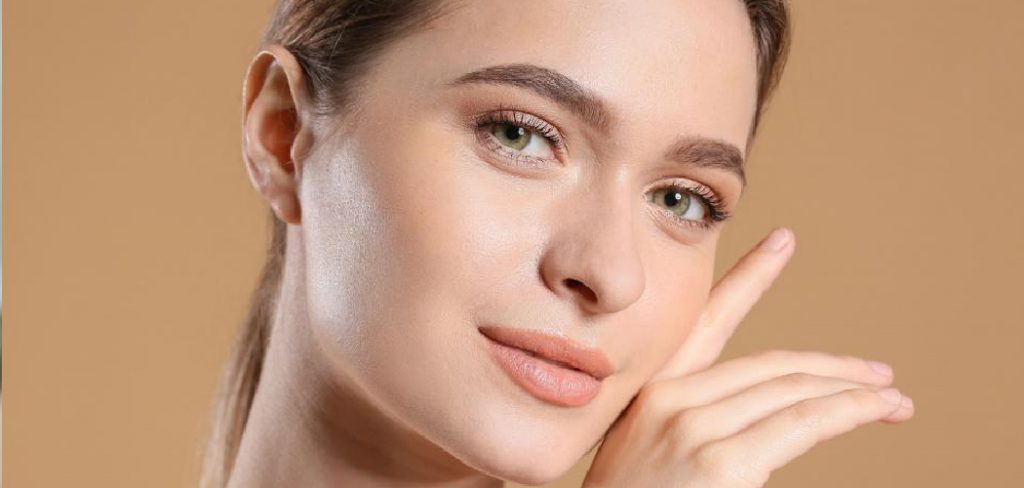
This article will guide you through gentle routines, targeted calming ingredients, color-correcting skincare, and protective tips that subtly blur redness without any makeup. We’ll also explore the importance of building a barrier-safe routine, choosing the right daily protection, understanding triggers, and making simple lifestyle adjustments. By the end, you’ll have actionable steps for calming, soothing, and minimizing the appearance of rosacea—naturally and confidently.
Rosacea Basics: Types, Triggers, and Patterns
Before exploring specific strategies, it helps to understand what rosacea is and why it can be so persistent.
Subtypes and Common Symptoms
Rosacea isn’t the same for everyone; knowing the type you have helps tailor your approach. The most common subtypes include erythematotelangiectatic (characterized by facial redness and flushed skin), papulopustular (with acne-like breakouts), phymatous (thickened, bumpy skin), and ocular rosacea (involving the eyes). Most people experience visible blood vessels, flushing across the cheeks and nose, and sometimes bumps or a rough texture. These symptoms can fluctuate from mild to pronounced depending on skin triggers and environmental factors.
Heat, Spice, Alcohol, and Stress Triggers
Daily life is filled with things that can make rosacea worse—even small changes in your routine may spark a flush. Triggers often include hot beverages, spicy foods, alcohol (especially red wine), sudden temperature changes, intense exercise, and emotional stress. Identifying your top triggers empowers you to take control and make simple swaps that dramatically reduce redness.
Flare vs. Baseline Redness
Rosacea often follows a pattern: periods of relative calm, punctuated by flare-ups. Flares can be sudden and intense, while baseline redness may linger even on “good” days. The goal is to lower your baseline redness through daily care, so flares become less frequent and less severe. Understanding your baseline helps you track progress and celebrate the small victories.
Build a Gentle, Redness-Safe Routine
A soothing and protective routine forms the cornerstone of managing rosacea without makeup. Attention to detail and a kind approach towards your skin deliver the most noticeable results.
Low-Foam Cleanser and Tepid Water
Cleansing is a crucial moment. Opt for a mild, sulfate-free gel or cream cleanser that doesn’t strip natural oils or disrupt your barrier. Lukewarm water is important: avoid hot temperatures that can dilate blood vessels and spark more redness. Gently massage the cleanser with your fingertips, and rinse thoroughly—never scrub, as friction can trigger flushing.
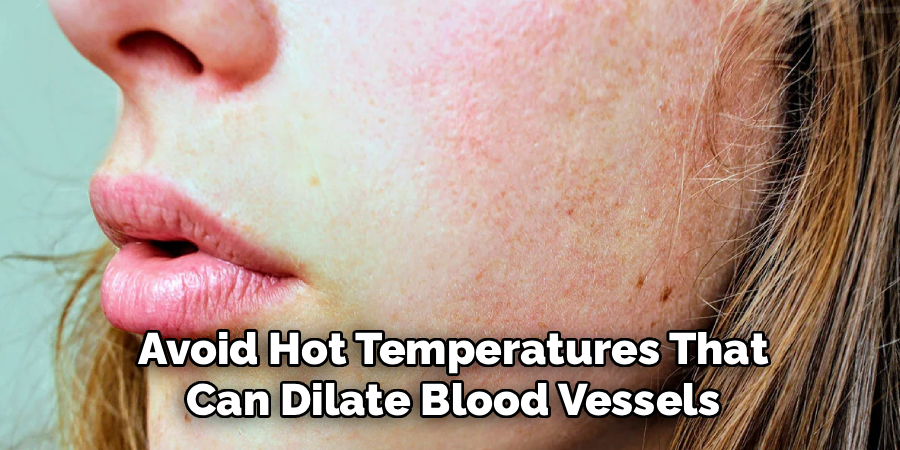
Barrier-Supporting Moisturizer
After cleansing, seal in hydration with a moisturizer that focuses on barrier repair. Choose fragrance-free, hypoallergenic formulas rich in ceramides, glycerin, and fatty acids. These ingredients bolster your protective layer, trapping moisture without clogging pores. A strong skin barrier deflects environmental triggers and soothes existing irritation, setting the stage for healthier, calmer skin every day.
Patch Testing New Products
Each person’s rosacea is unique, so patch test any new skincare on a small area first. Apply a modest amount behind your ear or along your jawline. Monitor for 24 hours for signs of stinging, redness, or bumps. This simple precaution helps avoid sudden, full-face flare-ups from hidden irritants.
Step-by-Step Guide: How to Hide Rosacea Without Makeup
If you’re determined to hide rosacea without makeup, there are proven steps to follow each morning that gradually improve your skin’s appearance.
Step 1: Soothe with Thermal Water or Essence
Immediately after washing, apply a calming thermal water spray or essence. These light mists are mineral-rich and help hydrate the skin, easing the initial redness that sometimes follows cleansing. Gently pat the product in with clean hands, allowing it to soak in and provide a base layer of comfort.
Step 2: Apply Calming Serum (Azelaic, Niacinamide)
Next, choose a serum containing known redness reducers such as azelaic acid or niacinamide. Azelaic acid has both anti-inflammatory and skin-brightening properties, helping fade persistent redness over time. Niacinamide calms the skin and supports the barrier, tackling both visible symptoms and underlying irritation. Use one or the other, applying a few drops and spreading it evenly over the face. Allow the serum to absorb fully before the next step.
Step 3: Seal with Ceramide-Rich Moisturizer
Follow up with a ceramide-rich moisturizer. Ceramides are lipid molecules that help restore the skin’s natural defense, protecting against irritation from weather, pollution, and even some skincare ingredients. Patting moisturizer into the skin—not rubbing—supports absorption while minimizing friction.
Step 4: Green-Tinted Mineral SPF for Optical Neutralizing
Here’s a pro tip: choose a mineral sunscreen with a faint green tint. The green color cancels out red tones via optical color correction, offering a subtle blurring effect. Zinc oxide and titanium dioxide are gentle, non-irritating sun blockers that reflect UV rays and physically shield the skin. Apply generously each morning, even on cloudy days, and reapply as needed if you’re outdoors.
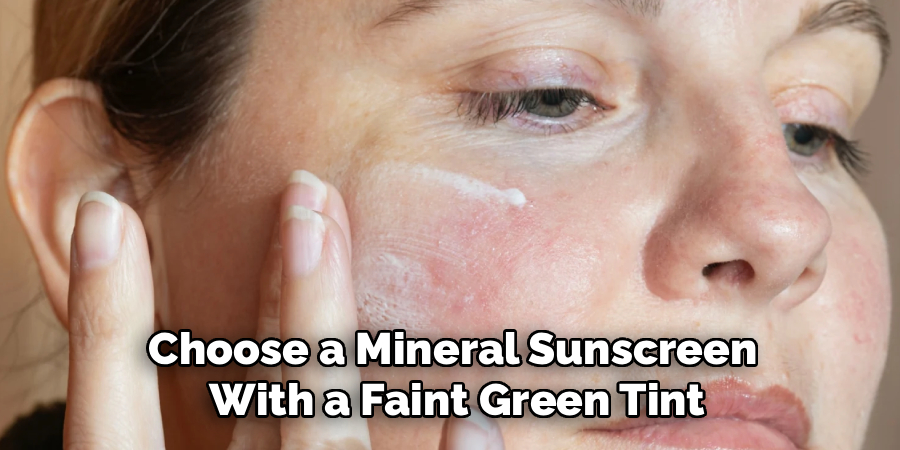
Step 5: Midday Cool-Down and Blotting Protocol
If redness creeps back midday, pause for a gentle skin reset. Use a clean, soft cloth to cool your cheeks with tepid water, or lightly blot away oil and sweat without rubbing. Some prefer a reapplication of thermal water spray. These techniques provide a sense of relief and visibly mellow out flushes, keeping your appearance even.
Calming Ingredients That Work
Finding soothing ingredients in your skincare arsenal is essential for anyone learning how to hide rosacea without makeup.
Azelaic Acid and Niacinamide
Azelaic acid is celebrated for diminishing both persistent redness and acne-like bumps. It’s available in prescription and over-the-counter forms and is typically well-tolerated by sensitive skin types. Niacinamide, also known as vitamin B3, strengthens the skin barrier while minimizing blotchiness and visible vessels. Incorporating one or both into your routine can promote a healthier complexion over weeks and months.
Allantoin, Bisabolol, and Panthenol
Beyond the more famous actives, certain soothing agents have the power to diffuse heat and discomfort. Allantoin softens and calms, reducing the look of irritation. Bisabolol (derived from chamomile) is prized for its anti-inflammatory and skin-soothing effects. Panthenol, a form of vitamin B5, attracts moisture and enhances the skin’s resilience. Look for these in moisturizers, toners, or masks geared for sensitive complexions.
Avoiding Fragrance and Irritants
Always scan ingredient lists for fragrance, essential oils, alcohol, or harsh preservatives. These often trigger or worsen rosacea. Selecting “fragrance-free” products and avoiding unnecessary botanical extracts can prevent setbacks and help you steadily reduce facial redness with continued use.
Barrier Repair and Sensory Comfort
A healthy skin barrier is your best defense against chronic redness and discomfort. Thoughtful ingredient choices and small routine adjustments make all the difference.
Ceramides, Cholesterol, Fatty Acids
The outermost layer of your skin (the stratum corneum) thrives on a balance of three key lipids: ceramides, cholesterol, and fatty acids. Products containing this triad help repair existing damage, making skin more resilient to temperature extremes and dryness. Over time, they contribute to a smoother, softer appearance and less day-to-day reactivity.
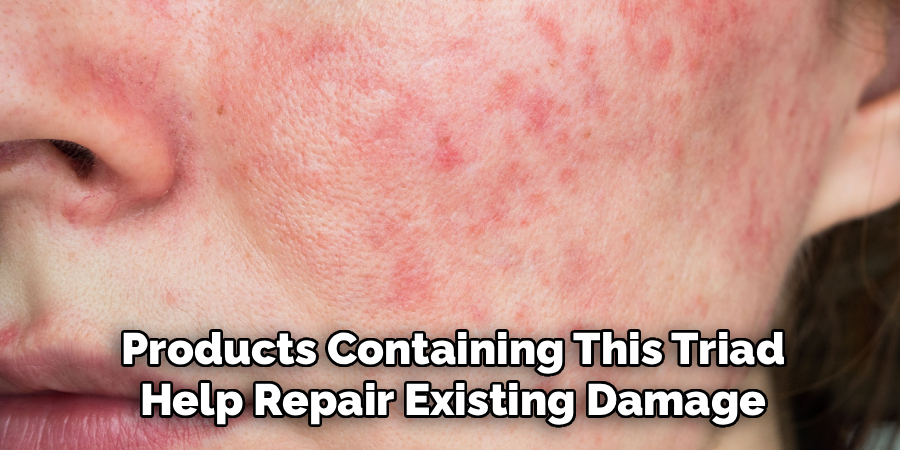
Occlusives vs. Breathable Finishes
Occlusive creams (those that form a heavy, waxy film) can be comforting in extremely dry climates but may trap heat and provoke more redness for some. On the other hand, lightweight, breathable moisturizers shield without suffocating the skin. Pay close attention to how your face feels after application and adjust textures seasonally for comfort.
Texture Choices in Hot vs. Cold Climates
Weather matters. Gel-cream formulas with humectants like glycerin and hyaluronic acid work well when it’s warm, preventing clogged pores and excessive shine. In cold or windy settings, more emollient options help stave off dryness and windburn. Adjusting your routine as seasons change prevents new triggers from sabotaging your progress.
Daily Protection: Sun, Wind, and Temperature
Consistent protection from environmental triggers is one of the most effective ways to hide rosacea without makeup.
Mineral SPF and Reapplication
Sun exposure is a relentless trigger of both new and chronic redness. A daily mineral sunscreen (look for zinc oxide or titanium dioxide front and center) shields sensitive skin from UV rays that cause flares and long-term damage. Apply SPF each morning as the last step in your routine and top up every two hours if you spend time outdoors, especially during sunny or snowy days.
Physical Barriers (Hats, Scarves)
In addition to sunscreen, physical barriers such as wide-brimmed hats and soft scarves provide an extra layer of protection against sun, wind, and pollution. Hats intercept direct rays, while scarves guard the cheeks and nose—two of rosacea’s favorite target zones—against both cold wind and summer heat.
Indoor Triggers (Heaters, AC)
Temperature swings indoors can be just as problematic. Space heaters, radiators, and strong air conditioning dry out the air and irritate already sensitive skin. To minimize their impact, position yourself away from direct blow and consider using a humidifier to maintain healthy moisture levels inside your home or workspace.
Lifestyle Tactics to Reduce Flares
Beyond skincare, lifestyle changes strongly influence how often and how severely rosacea appears.
Diet and Beverage Swaps
Certain foods and drinks, especially spicy meals and alcohol, are major triggers for most. Swapping out red wine for sparkling water, or spicy curries for milder fare, can significantly reduce the frequency of flare-ups. Keeping a food diary helps you spot connections between meals and skin changes, making it easier to pinpoint your personal triggers.
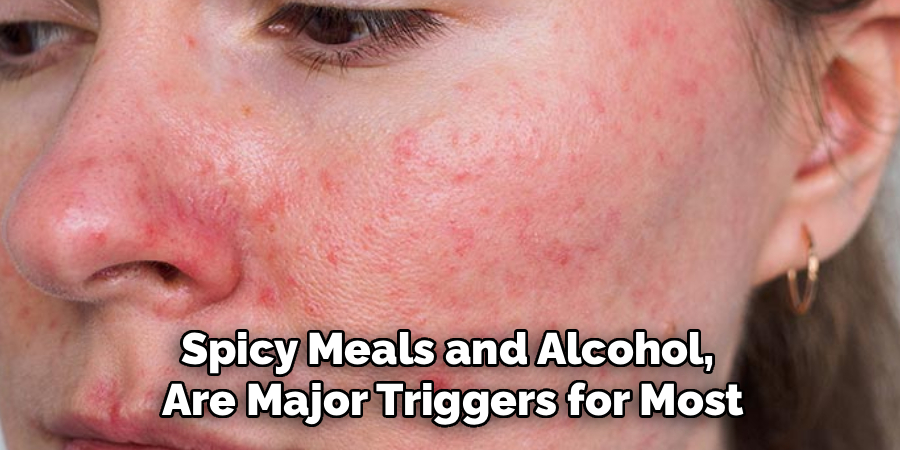
Stress Management and Exercise Pacing
Stress isn’t always avoidable, but it can be managed. Incorporate simple breathing exercises, meditation, or gentle yoga into your routine to temper stress-induced flushes. When exercising, pace yourself and drink cool water; opt for slower, moderate activities on high-flare days, and avoid overheating whenever possible.
Sleep and Alcohol Moderation
Consistent, restorative sleep supports your overall health and skin condition. Poor sleep, like heavy alcohol intake, can weaken your barrier and ramp up inflammation. Prioritizing good sleep hygiene and moderating evening drinks both make a visible difference to your morning complexion.
Common Mistakes and Fixes
Wanting fast results can lead to choices that worsen rosacea. Learning from common errors ensures the best results as you hide rosacea without makeup.
Over-Exfoliating or Hot Water
Scrubbing and strong exfoliants can strip the skin and worsen redness, even if they make your skin feel clean initially. Stick to very gentle chemical exfoliants (like polyhydroxy acids) only if your skin can tolerate them, but avoid regular use. Similarly, hot water is a frequent culprit for triggering a flush; always use cool or lukewarm water.
Heavy Occlusion and Heat Trapping
Slathering thick ointments or oils can seem comforting but sometimes creates a heat trap, leading to additional swelling and redness. Choose non-comedogenic products that offer protection without feeling greasy or heavy, observing your skin’s response and adjusting as needed.
Skipping SPF on Cloudy Days
UV rays penetrate clouds and windows, reaching your skin every day. Skipping SPF on overcast or mildly sunny days allows damage and redness to quietly accumulate. Make sunscreen a daily habit—it’s as crucial to your routine as cleansing and moisturizing.
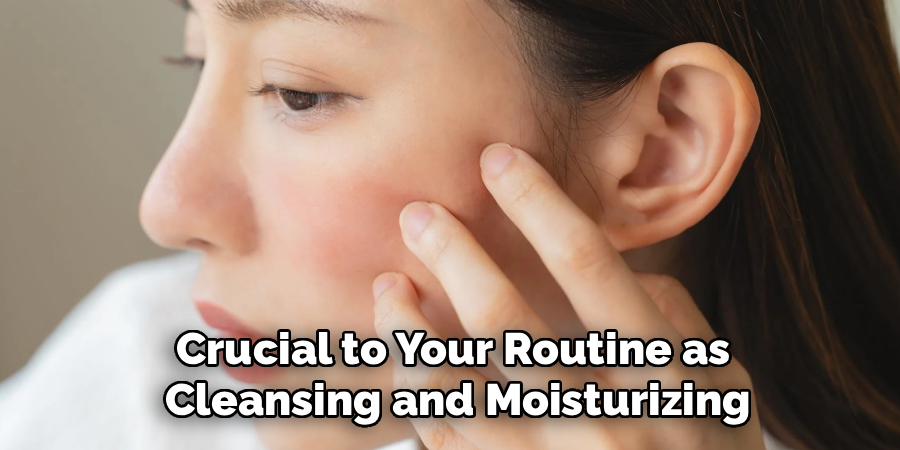
Conclusion
When you’re navigating how to hide rosacea without makeup, remember: gentle consistency trumps all. Soft, hydrating cleansers, barrier-supportive moisturizers, and calming actives lay the foundation for improvement. Layering in optical blurring with mineral SPF, sun-safe habits, and lifestyle tweaks leads to ongoing progress. Above all, tracking your triggers and responding mindfully makes a profound difference.
While redness can’t always be fully hidden without foundation or concealer, committing to these non-makeup strategies yields healthier, more comfortable skin and restored self-confidence. Each positive choice builds toward softer, calmer-looking skin—one day at a time.
About the Author
Jane Hubbard is a passionate beauty expert with a wealth of experience in makeup, hair, and overall beauty techniques. After years of working as a hairdresser specialist, she followed her entrepreneurial spirit and started her own consultancy business.
Jane has always been driven by her desire to help others feel confident in their own skin, and she does this by sharing her knowledge, experiences, and practical beauty tips. Through her consultancy, she empowers individuals to embrace their unique beauty, offering tailored guidance that boosts both self-esteem and personal style.
Professional Focus
- Specializes in makeup, hairstyling, and beauty consulting.
- Provides personalized beauty advice, tips, and techniques to help individuals feel confident in their appearance.
- Dedicated to staying up-to-date with the latest industry trends and developments.
- Passionate about creating a comfortable and empowering experience for every client.
Education History
- University of Craft and Design – Bachelor of Fine Arts (BFA) in Woodworking and Furniture Design
- Woodworking Apprenticeships – Extensive hands-on training with skilled craftsmen to refine carpentry and furniture making techniques
- Online Courses & Masterclasses – Continued education in advanced woodworking techniques, design principles, and specialized tools
Expertise:
- Makeup artistry, hairstyling, and beauty consulting.
- Personalized beauty techniques to enhance confidence and self-expression.
- Educating clients on how to maintain their beauty routines at home.
